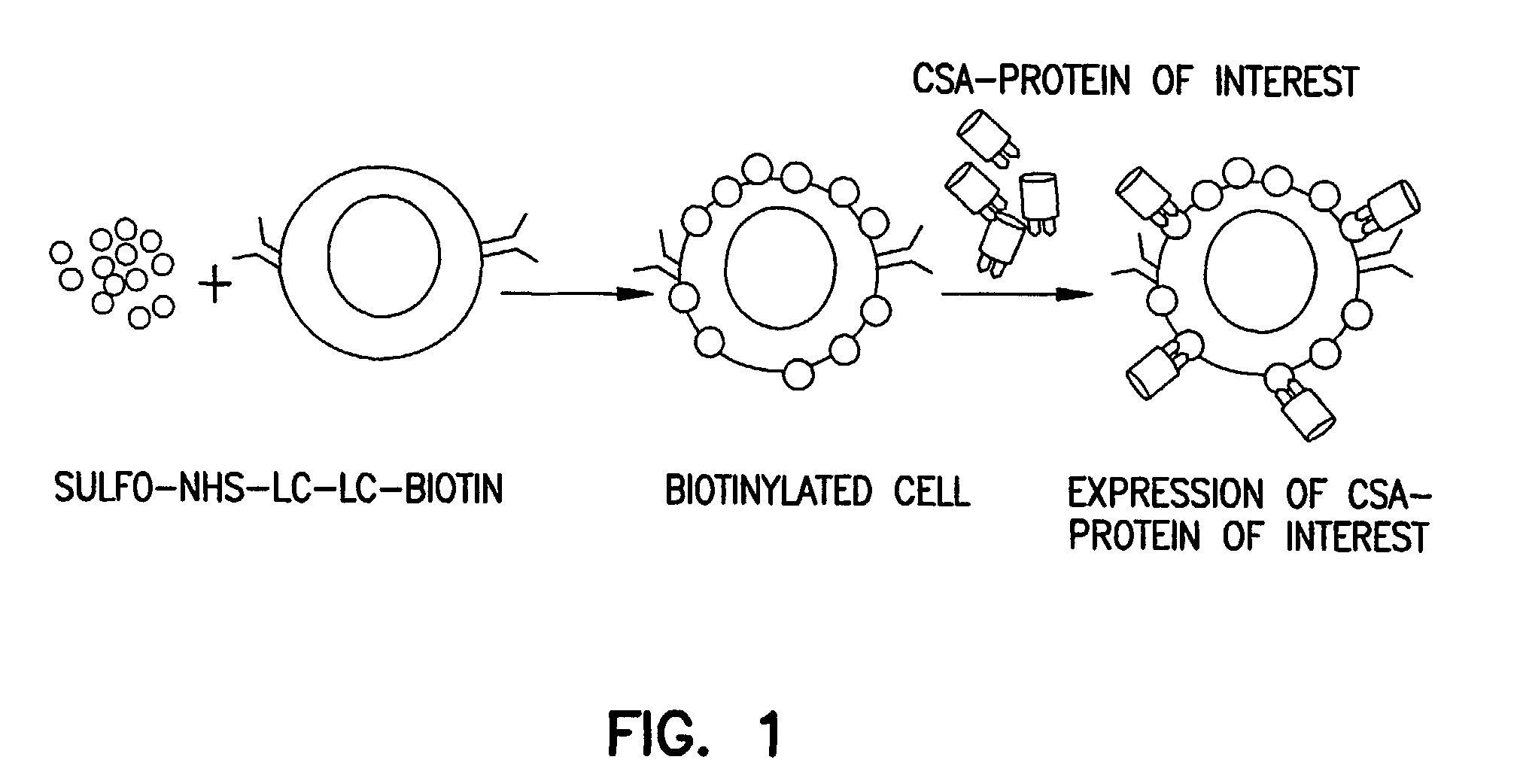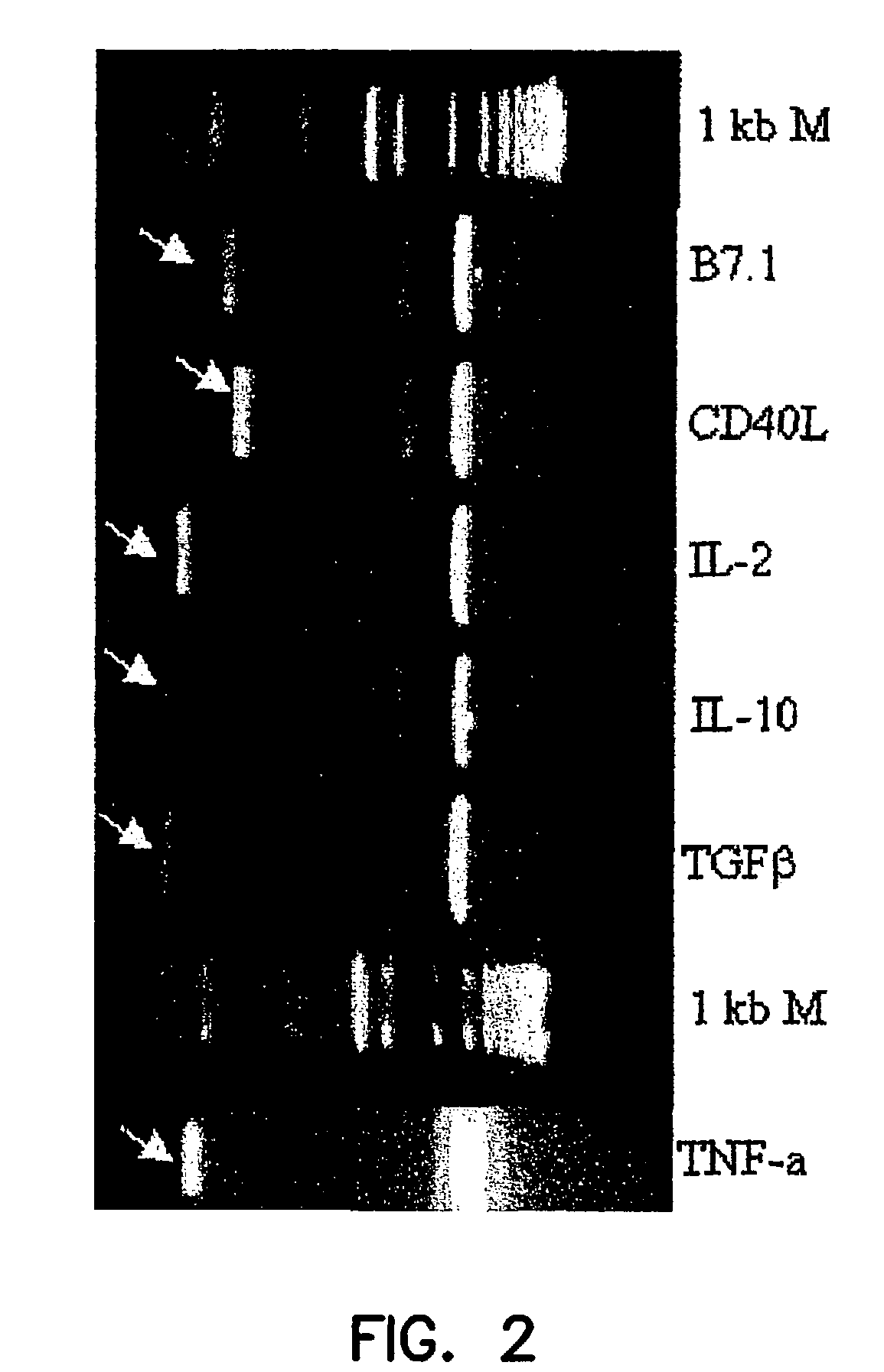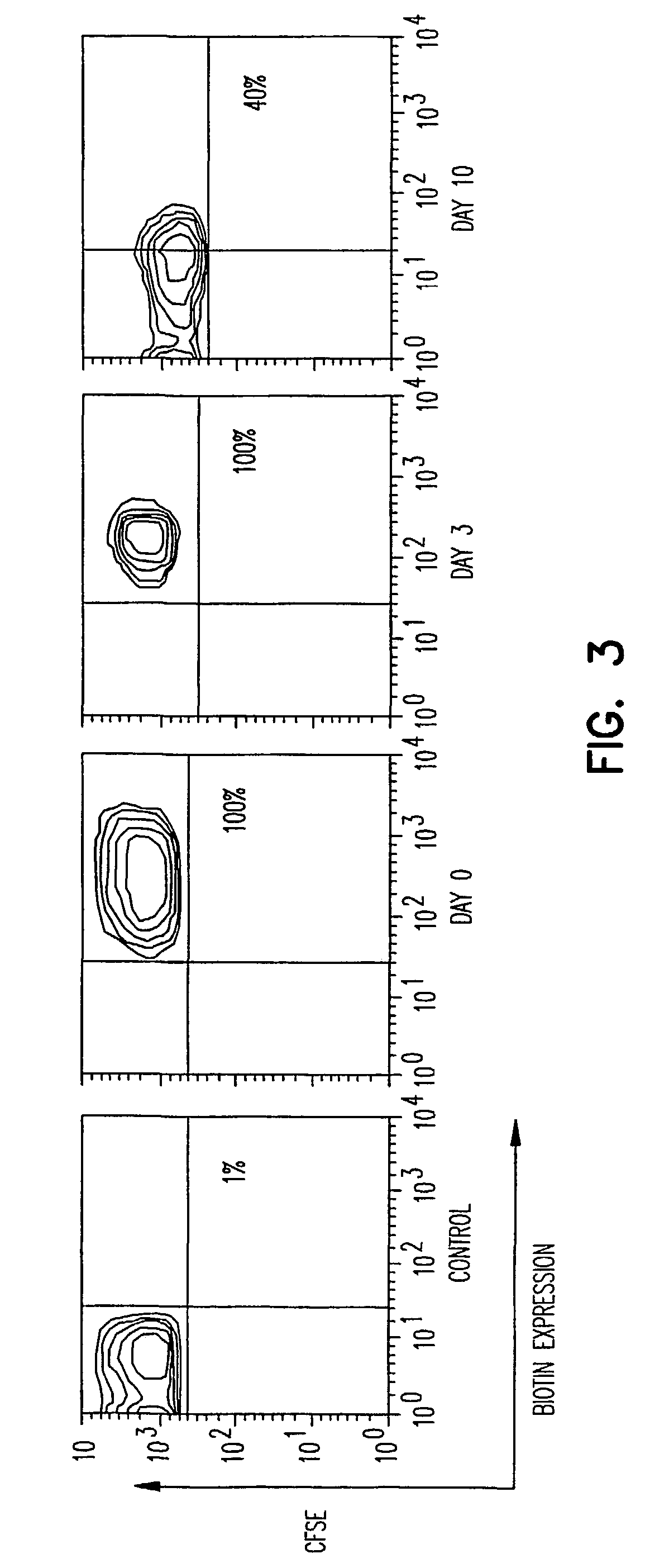Alteration of cell membrane with B7
a cell membrane and b7 technology, applied in the direction of fusion polypeptides, peptide/protein ingredients, unknown materials, etc., can solve the problems of uncertain delivery efficiency, limited safe and effective application of gene therapy to the treatment of diseases, and dangerous side effects of gene therapy. , to achieve the effect of systemic effects
- Summary
- Abstract
- Description
- Claims
- Application Information
AI Technical Summary
Benefits of technology
Problems solved by technology
Method used
Image
Examples
example 1
Cloning of Core Streptavidin for the Generation of Chimeric Proteins.
[0064]The present invention discloses technology for cell-surface modifications to express exogenous proteins without the introduction of nucleic acids into cells and comprises: i) generation of a chimeric molecule consisting of core streptavidin and functional domains of a desired protein, ii) modification of the cell membrane with biotin, and iii) decoration of the biotinylated cells with the chimeric molecule (FIG. 1). To accomplish this, genomic DNA encoding streptavidin was cloned from S. avidinii using specific primers in PCR. 5′ and 3′ primers were designed to incorporate sequences for selected restriction enzyme sites and amino acids that allow three dimensional flexibility, proper folding and function. The gene was cloned into the TA cloning vector, sequenced and subcloned into the pMT / Bip / V5-HisA vector for expression in a high-yield insect expression system (DES™, Invitrogen).
example 2
Construction of Chimeric Genes for Expression in Production Cells.
[0065]Total RNA was prepared from human cell lines or peripheral blood cells and 2 ng of this RNA was reverse transcribed into the first strand of DNA using oligo (dT) 18 as a primer for reverse transcriptase. One-tenth of this cDNA preparation was then amplified, using three sets of sense and antisense primers specific for human IL-2, IL-4, IL-10, TGF-β, FasL, TNF-α, B7.1, and CD40L in 8 separate PCR amplifications. The 5′ and 3′ primers were designed to include restriction enzyme sites for cloning and several amino acid residues to facilitate the proper folding of the product. These primers amplified DNA bands of expected sizes for all these genes of interest. These PCR products were then cloned into the TA cloning vector (Invitrogen, San Diego, Calif.) and a library prepared from this material was screened using the same oligonucleotide primers in PCR amplifications. The positive clones were digested with appropria...
example 3
Biotinylation of Cells, Expression of Recombinant Proteins, and Time Kinetics of Expression in Vitro
[0067]The therapeutic use of this protein-based approach requires successful biotinylation of cells, tissues, or organs under physiological conditions and attachment to these cells chimeric proteins consisting of CSA and molecules with therapeutic potential (FIG. 1).
[0068]The optimum conditions for biotinylation were first determined. Single cell suspensions were prepared from spleen or bone marrow of the rat. One million cells were incubated in various concentrations, ranging from 1.5 to 150 μM, of EZ-Link biotin (trade name of Sulfo-NHS-LC-biotin, Pierce, Rockford, Ill.) in saline at room temperature for 30 minutes. After extensive washing to remove free biotin, cells were either cultured or used for staining with fluorescein (APC)-labeled streptavidin in order to assess the level of biotinylation. 100% of the cells were positive for biotin at 5 μM biotin concentration (data not sho...
PUM
| Property | Measurement | Unit |
|---|---|---|
| Time | aaaaa | aaaaa |
| Temperature | aaaaa | aaaaa |
Abstract
Description
Claims
Application Information
 Login to View More
Login to View More - R&D
- Intellectual Property
- Life Sciences
- Materials
- Tech Scout
- Unparalleled Data Quality
- Higher Quality Content
- 60% Fewer Hallucinations
Browse by: Latest US Patents, China's latest patents, Technical Efficacy Thesaurus, Application Domain, Technology Topic, Popular Technical Reports.
© 2025 PatSnap. All rights reserved.Legal|Privacy policy|Modern Slavery Act Transparency Statement|Sitemap|About US| Contact US: help@patsnap.com



